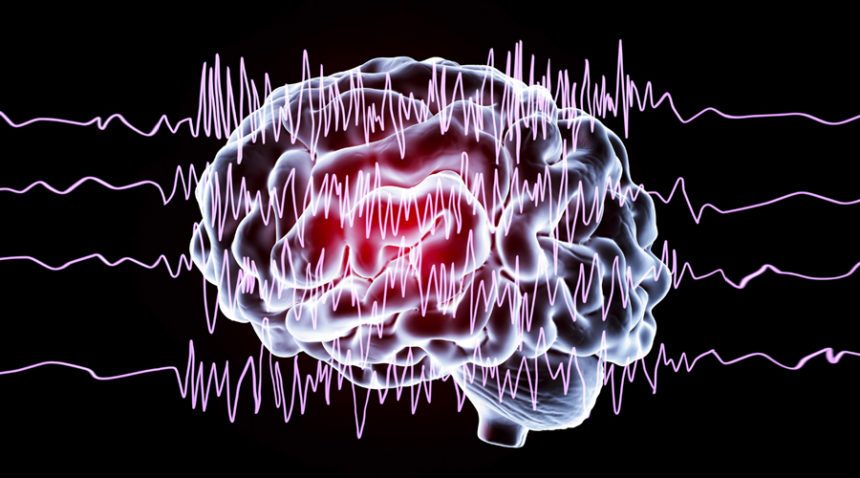Epilepsy is a common condition that can cause unprovoked seizures—sudden, uncontrolled electrical activity in the brain. These seizures can vary from a short staring spell to a full collapse, with spasms and loss of consciousness.
It’s not an easy condition to describe or to understand, so UNC neurologist Clio Rubinos, MD, explains it with a musical metaphor.
“Your brain works like a symphony,” she says. “Each electrical activity is like an individual instrument. They all have to play in harmony to create a beautiful melody.”
A seizure happens when some of these instruments are out of tune, she says.
“They can start playing their own songs and not working together to play one song,” she says.
Thankfully, medication can control seizures and help most people with epilepsy—more than 3 million adults and nearly half a million children in the United States—live like anyone else.
Causes of Epilepsy
Epilepsy can start at any age, in babies to the elderly. It can be caused by stroke, a head injury, an infection or a tumor in the brain, but in about half of people with epilepsy, the cause is unknown. Epilepsy is not contagious.
Babies can develop epilepsy because of problems with the way their brain formed, a lack of oxygen during birth or a high fever, among other causes.
There is a type of epilepsy that typically manifests during adolescence, called juvenile myoclonic epilepsy, Dr. Rubinos says. The symptoms can include rapid, uncontrolled muscle jerks. Often, the person loses awareness.
“We sometimes see this with college students,” she says. “They have sleep deprivation, maybe they have started drinking alcohol, they’re under a lot of stress, and they start having myoclonic movements—jerking of arms and legs.”
The patients can be treated with medications and sometimes grow out of the condition.
Epilepsy in adults can be caused by head trauma, a tumor, an infection or a degenerative brain disease such as Alzheimer’s.
Diagnosing Epilepsy
Having a seizure doesn’t necessarily mean a person has epilepsy, Dr. Rubinos says. Seizures can be caused by many factors, including a brain infection, high fever, medications, stroke or other brain injury.
Epilepsy is diagnosed when a person has two or more unprovoked seizures more than 24 hours apart. An electroencephalogram (EEG) confirms the diagnosis by measuring electrical activity in the brain.
“An EEG involves putting a lot of stickers on your head that are connected to cables that go into a computer,” she says. “It reads your brain activity in squiggly lines that are like the music of your brain. That lets us see which instruments—areas of your brain—are going out of tune.”
Identifying which parts of the brain are affected allows your doctor to know what kind of treatment will help you control the condition and avoid seizures.
Types of Seizures
There are many different types of seizures, and symptoms vary widely. One person may look like they are daydreaming. Another may lose consciousness or motor control, causing them to fall and experience spasms in their limbs.
Generalized onset seizures affect both sides of the brain, Dr. Rubinos says. Types of generalized seizures include:
- Tonic-clonic seizures, sometimes called grand mal seizures, during which a person becomes stiff and has rhythmic jerking motions.
- Absence seizures, during which a person “blanks out” or stares into space.
- Atonic seizures, in which parts of the body become limp. The person’s eyelids may droop, their head may nod or they may drop things. If they are standing when the seizure starts, they may fall to the ground.
Focal onset seizures affect one side of the brain. Categories include:
- Focal onset aware seizures, when a person is awake and aware during a seizure.
- Focal onset impaired awareness, when a person is confused or experiences changes in awareness.
Symptoms of focal onset seizures may include jerking, limp, weak, rigid or tense muscles. The person may twitch or have spasms. Some people clap, rub their hands or smack their lips.
Another category, unknown onset seizures, can include any of the symptoms above, but doctors don’t know what parts of the brain are affected.
Treating Epilepsy
Antiseizure medications are available to help people control their seizures, Dr. Rubinos says. Knowing the type and symptoms of a person’s seizures can help their doctor know what medication may be best. You may have to try more than one medication, and the dose may change, which is why it is important to keep your doctor informed about your health and how well the medicine is controlling your seizures.
Sometimes, when seizures come from a single part of the brain (focal seizures), surgery may be needed to stop or help control seizures.
When antiseizure medications are ineffective and surgery is not possible, other treatments may be used, which include changes in diet and implantable devices that detect changes in brain activity.
“The important thing is to work with your doctor to find a treatment that works for you,” Dr. Rubinos says.
If you are concerned about brain health, talk to your doctor or find one near you.

